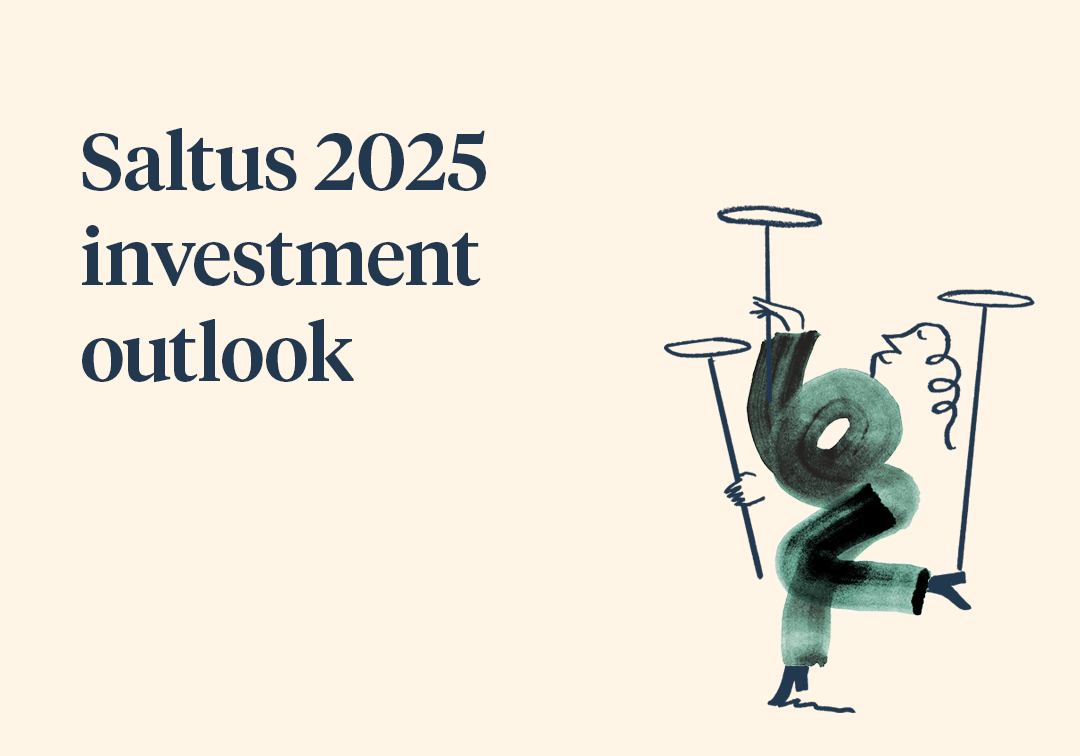Global markets have just had their worst start to a year in decades. In this article I discuss some current investment themes, how markets have responded, and finish with some reasons to be positive
1. War in Europe
The human and economic costs are still mounting. Far from the quick and decisive victory Putin expected, it’s been going for over 130 days with little sign of ending. Putin needs a victory to save face, and with determined resistance from Ukraine, we fear a long-drawn-out conflict, escalation in the types of weaponry, and other countries increasing their involvement.
Europe is closest to the action so is being hit particularly hard. Accenture estimate the potential cumulative losses to Eurozone GDP in 2022 and 2023 from a protracted war (€920 billion) would be roughly eight times larger than the supply chain disruption as a result of covid (€112.7billion). They estimate “it could take as long as two years for economies to mitigate the existing challenges they face caused by a lack of materials, logistics breakdowns, energy market volatility, and talent shortages”.(1)
How do markets typically respond to war?
The Dow Jones Industrial Average measures 30 prominent companies listed on stock exchanges in the United States. If you look at how it reacted to historical geopolitical events (shown below), you see its average fall was only -3.6%, and in 16 out of the 19 cases, the market was in positive territory six months after the initial reaction. This suggests that markets do react to the onset of war, but they normally recover fairly swiftly.
| Event | DJIA Reaction Dates | Date Range % Gain/Loss | Six Months Later |
| Fall of France | 9 May 40 – 22 Jun 40 | -17.1% | 7.0% |
| Pearl Harbor | 6 Dec 41 – 10 Dec 41 | -6.5% | -9.6% |
| Korean War | 23 Jun 50 – 13 Jul 50 | -12.0% | 19.2% |
| Cuban Missile Crisis | 19 Oct 62 – 27 Oct 62 | 1.1% | 24.2% |
| US Bombs Cambodia | 29 Apr 70 – 14 May 70 | -7.1% | 13.5% |
| Arab Oil Embargo | 16 Oct 73 – 5 Dec 73 | -18.5% | 7.2% |
| USSR in Afghanistan | 24 Dec 79 – 3 Jan 80 | -2.2% | 6.8% |
| Falkland Island Wars | 1 Apr 82 – 7 May 82 | 4.3% | 20.8% |
| US Invades Grenada | 24 Oct 83 – 7 Nov 83 | -2.7% | -3.2% |
| US Bombs Libya | 14 Apr 86 – 21 Apr 86 | 2.8% | -1.0% |
| Invasion of Panama | 15 Dec 89 – 20 Dec 89 | -1.9% | 8.0% |
| Gulf War | 16 Jan 91 – 17 Jan 91 | 4.6% | 15.0% |
| World Trade Center Bombing | 25 Feb 93 – 27 Feb 93 | -0.3% | 8.5% |
| Oklahoma City Bombing | 18 Apr 95 – 20 Apr 95 | 1.2% | 12.9% |
| US Embassy Bombing in Africa | 6 Aug 98 – 14 Aug 98 | -1.8% | 10.4% |
| September 11th Attacks | 10 Sep 01 – 21 Sep 01 | -14.3% | 24.8% |
| War in Afghanistan | 5 Oct 01 – 9 Oct 01 | -0.7% | 12.4% |
| Iraq War | 19 Mar 03 – 5 Jan 03 | 2.3% | 15.6% |
| London Train Bombing | 6 Jul 05 – 7 Jul 05 | 0.3% | 5.6% |
| Average | -3.6% | 10.4% |
Source: Amundi, Morningstar and Bloomberg. As of December 31, 2019 (2)
2. The return of high inflation
Other than the appalling humanitarian costs, the most obvious impact of the war in Europe is the increase in the cost of… pretty much everything.
Consumers and businesses emerged from their covid hibernations eager to make up for lost time. They increased their demand for goods and services, which, combined with covid induced supply-chain disruptions, caused inflation to increase through 2021 and into 2022. The Federal Reserve assured us this was going to be “transitory”… the “worst inflation call in the history” of the Fed, according to Allianz Chief Economic Advisor Mohamed El-Erian.(3)
The Russia-Ukraine conflict created another supply shock, on top of the covid supply shock. Russia and Ukraine are relatively small players in terms of world trade (2.5% of world merchandise trade), and output (1.9% of world GDP in 2021). However, they account for high percentages of total global food exports, notably sunflower oil (45%) wheat (25%), and barley (15%). Russia is also a key supplier of fertiliser (20% global market share). Africa and the Middle East import over 50% of their cereal needs from Ukraine and Russia. They also account for high percentages of global fuel exports, with Russia alone accounting for 9.4% of world trade in fuels, and a 20% share in natural gas exports. Russia is the largest producer of palladium (used in fuel cells / catalytic converters), supplying 26% of global import demand in 2019, and Ukraine supplied a whopping 90% of the US’s semiconductor-grade neon, which is used for lasers in chipmaking.(4)
With production and shipping in the area heavily disrupted, global buyers have sought alternative suppliers, but adaptation takes time, and many are forced to pay higher prices.
The result is the inflation we are all experiencing. It hasn’t been this high since the ‘80s, at over 9% across developed markets.
Due to recent changes to central bank policy, the market thinks inflation will be controlled, and should fall. You can tell this from looking at the breakeven inflation rate on inflation linked bonds. We do think this is justified, however, the market could be wrong. We’re watching two key areas: wage pressures, and China’s reopening. Higher wages means higher spending, which would put further upward pressure on prices. China will eventually reopen, and when it does, a spike in demand from a major producer and consumer could cause inflation to rise again.
How do risk assets respond to inflation?
The table below shows the average real (after adjusting for inflation) returns on US bonds and equities between 1926 and 2010, during different inflation regimes.
| Dimson-Marsh-Staunton | |||
| Inflation regime: 1926-2010 | "Definitions, annual inflation =" | US bonds | US equity |
| Severe | Greater than 10% | -12.5% | -6.7% |
| High | 4.4% to 10% | -3.1% | 1.9% |
| Fed target to moderate | 1.6% to 4.4% | 4.4% | 12.4% |
| Low | 0% to 1.6% | 5.5% | 7.1% |
| Deflation | Negative | 10.0% | 13.9% |
Source: What Works on Wall Street 4th Edition (5)
What can we learn from this? On average, US equities have beaten US bonds in all environments. High inflation does not guarantee negative real returns on stocks.
3. Interest rate rises
Across the developed world, to provide support following the Great Financial Crisis of ‘08/09, and then the covid pandemic, interest rates have been extremely low by historical standards.
As 2022 marched onwards, and inflation kept rising, many central banks, slow to react initially, moved to increase interest rates and signalled that inflation may persist for some time.
Investors realised there was a change in the investment regime, and they reacted aggressively. We had gone from low inflation and low interest rates to high inflation and rising interest rates, extremely quickly. This matters for investors because, when deciding what to buy, sell or hold, they need to consider what future returns are likely to be, and an increase in the cost of borrowing/return on cash (higher interest rates), and a reduction in the future spending power of assets (higher inflation), changes the outlook considerably.
Increase interest rates and you increase the cost of debt. This causes people to divert spending from goods and services, to servicing debt. In doing so, demand for goods and services is reduced, cooling inflationary pressures, which is why central banks are increasing rates.
However, one person’s spending is another person’s income. Reduce spending and you reduce earnings. Goldman Sachs estimate that every 1% increase in central bank policy rate lowers gross domestic product by about 1%, with a twelve-month delay.(6) It takes time for the impact to be seen so it is difficult for central bankers to know if they are setting interest rates correctly, and this is a problem.
Sometimes a central bank can raise rates just enough to control inflation, but not enough to cause a recession (some months later), which is termed a soft landing. 40% of tightening cycles have not led to a recession in the US (6). However, if central banks raise rates too hard or too fast, this can cause a recession.
The market currently expects rates to rise to just under 3.5% in the US in the first quarter of 2023 (the rate is currently 1.75%), before reducing again through 2023.
Do stock markets always fall when interest rates rise?
Dow Jones Market Data have analysed four of the most recent cycles of increasing interest rates, and their impact on US stock indices as measured by the Dow Jones Industrial
Average, the S&P 500 and the Nasdaq. In only one of the cycles was there a negative period for stocks. So interest rate increases aren’t always bad for stocks.
| Rate hike cycle | DJIA | S&P 500 | Nasdaq |
| Feb 94 - Jul 95 | 16.3% | 13.8% | 18.1% |
| Mar 97 - Sep 98 | 17.4% | 32.6% | 40.0% |
| Jun 99 - Jan 01 | -1.6% | -5.0% | -13.3% |
| Jun 04 - Sep 07 | 28.7% | 30.0% | 26.9% |
| Average % change | 15.2% | 17.9% | 17.9% |
Source: Dow Jones Market Data (7)
4. Slowing economic growth
At the start of the year, few were predicting recession any time soon. But as inflation soared, economists’ median probability of recession (in the UK, US and China) increased from around 10% to around 35% currently, according to data compiled by Bloomberg.
Global GDP estimates for 2022 have fallen sharply since the start of the year (4.4% to 3.4% currently), but growth estimates are still positive for both 2023 (3.2%) and 2024 (2.95%), according to Bloomberg’s World GDP Forecast. The central base therefore is one of a business cycle that is maturing, rather than ending.
Do stocks always fall during a recession?
Since World War II there have been 13 recessions in the US, defined as two consecutive quarters of declining GDP. During recessionary years, the US stock market, as measured by the S&P 500, fell about half the time over the year, the average return in a recession year has been -1.1%. The two-year return was 14% on average. Therefore, history suggests that provided you have an adequate time horizon, recessions rarely cause losses in the stock market.
| Recession year | Recession year returns (S&P 500) | Following year returns (S&P 500) | Two-year return |
| 1945 | 30.3% | -11.9% | 14.8% |
| 1949 | 10.3% | 21.8% | 34.3% |
| 1953 | -6.6% | 45.0% | 35.4% |
| 1957 | -14.3% | 38.1% | 18.4% |
| 1960 | -3.0% | 23.1% | 19.4% |
| 1970 | 0.1% | 10.8% | 10.9% |
| 1974 | -29.7% | 31.5% | -7.6% |
| 1980 | 25.8% | -9.7% | 13.6% |
| 1982 | 14.8% | 17.3% | 34.7% |
| 1990 | -6.6% | 26.3% | 18.0% |
| 2001 | -13.0% | -23.4% | -33.4% |
| 2008 | -38.5% | 23.5% | -24.0% |
| 2020 | 16.3% | 26.9% | 47.6% |
| Average % return | -1.1% | 16.9% | 14.0% |
| % are negative | 53.8% | 23.1% | 23.1% |
Source: CFRA Research, NBER, S&P Global (8)
5. Deglobalisation
Since World War II we have seen unprecedented increases in global trade and income. Mostly due to 1) a reduction in information and communication costs, 2) technological changes allowing for production to be fragmented (splitting production into separate stages, completed in different locations), and 3) political developments such as the integration of Europe and Asia into global markets (9).
The result has been substantial growth in income per capita, and downward pressure on prices.
But this is changing. Several factors have combined to cause a significant slowing in the growth of global trade and cooperation. We have seen the rise of populism and nationalism, trade wars, a global pandemic, actual wars, and all the while China is rebalancing its economy from export-led growth to one with greater reliance on internal consumption and services.
Even before covid and the war, CEOs had been near-shoring production lines, focussing on security of production over productivity. Covid and the war in Ukraine have accelerated this trend.
This process takes time, and costs money. We suspect the deglobalisation trend will put upward pressure on prices, so that inflation remains more elevated for the next few years than it has been for recent history. Because of this, the 30-year expansion in corporate profit margins may have come to an end.
6. Liquidity
To provide assistance following the Great Financial Crisis, and also the covid pandemic, many central banks acquired financial assets.
Most are now in the process of reducing the size of their balance sheets. The result has been a significant reduction in liquidity. Aggregate central bank liquidity, expressed in US dollar terms is contracting quickly, at a rate of -22.7% annualised over the last three months. The US Federal Reserve is tightening much faster than other central banks. This has contributed to the strength of the US dollar. Compared to the US dollar, year to date the Yen has depreciated -18%, Sterling -10%, Euro -8%, and Yuan -5% (10).
Now central banks are no longer buying financial assets, and are in many places selling them, this has resulted in downward pressure on prices, and reduced the ability of companies to both take on and service debts. These effects are intentional, the support should no longer be necessary and its inflationary effects no longer desired, but other impacts include increasing financial market volatility, as well as affecting non-American borrowers of US dollars, particularly those in Emerging Markets.
7. The rise of the machines
90% of the data in the world was created in the last two years (11), and computer power has increased over 170x since the year 2000 (12).
Computerised trading systems were introduced in the ‘70s. Now, more trades are executed by computers than people. It allows for faster and easier execution of orders, and can reduce trading costs. However, it can also exacerbate trends, for example flash crashes, and can result in dramatic losses in liquidity.
…..
Any one of the above themes could have caused financial markets to struggle this year. The combination of them created the worst start to a year in decades.
Let’s take a quick look at each asset class.
Equities
| Equities | 1 Month | 3 Month | Year to date |
| World | -8.6% | -15.8% | -20.4% |
| US | -8.8% | -15.9% | -20.5% |
| UK | -4.9% | -2.3% | 3.2% |
| Europe | -8.6% | -11.1% | -18.3% |
| Japan | -2.0% | -3.7% | -5.5% |
| Asia | -5.2% | -9.6% | -16.1% |
| Emerging markets | -7.2% | -11.7% | -17.0% |
| China | 6.2% | 8.4% | -6.2% |
Stock markets are down significantly year to date, US stocks had their worst start to the year in 50 years.
It was one of the most volatile periods for the stock market ever.
Bonds
| Fixed income | 1 Month | 3 Month | Year to date |
| Global Government Bonds | -1.2% | -4.4% | -8.9% |
| Global IG Corporate Bonds | -2.6% | -6.9% | -13.5% |
| Global HY Corporate Bonds | -6.8% | -10.1% | -14.1% |
| Global Inflation Protected Bonds | -3.5% | -10.2% | -12.6% |
| Emerging Market Debt | -4.6% | -8.8% | -17.3% |
Global investment grade bonds posted their worst start to a year ever.
Other Assets
| Other | 1 Month | 3 Month | Year to date |
| Gold/USD | -1.6% | -6.7% | -1.2% |
| Commodities | -10.8% | -5.7% | 18.4% |
| Oil (brent) | -6.5% | 6.4% | 47.6% |
| Bitcoin/USD | -41.1% | -59.1% | -59.6% |
Commodities were the stand-out performer, at the peak, up over 35% at their peak. Bitcoin and gold both proved themselves to be poor hedges against uncertainty and inflation.
Reasons to be positive
- We recognise volatile periods in markets can be uncomfortable, but they’re a part of the process. History has taught us that things will get better, and patient investors should expect to be rewarded in time.
- History has also taught us that wars, inflationary periods, interest rate rises, and recessions, aren’t new, and don’t guarantee losses on investment portfolios. True, this time may be different, but given a long enough time horizon, markets have recovered from these events 100% of the time.
- Some bubbles within asset prices have been popped without causing contagion from Wall Street to Main Street as can often happen.
- Banks are still lending so companies and individuals have access to credit.
- There are very low levels of unemployment in most economies.
- Stock markets discount the future, they typically fall before recession hits, and rise before it ends, so it’s possible we have already seen the bottom in stock markets.
- The volatility has presented some interesting buying opportunities, some fantastic companies are trading at huge discounts to where they were at the start of the year. Similarly in the bond market, now that yields have picked up (given the falls in the prices), you’re finally getting paid for the risk you are taking.
What am I advising my clients?
- Not to sell investments, or reduce risk, unless your particular circumstances require you to.
- Be patient, and you should be rewarded over time.
- For those with sufficient risk tolerance, who have capital they can afford to risk, investing what they will not need for at least five years. Markets may fall further from here, but on a longer-term view, now may prove to be a good time to have entered the market, given the depressed levels of stock prices.
- And most importantly, stick to your plan, for:
“Once we’ve made a decision based on our personal goals and plans, often the best thing we can do is practice benign neglect. You never plant a tree and then pull it out every time the wind blows just to check the roots. I think you’ll find that trees grow much better when you stop looking at the roots all the time.” Carl Richards
Sources:
(1): Oxford Economics Global Economic Model results for scenarios designed by Accenture Research for “from disruption to reinvention, the future of supply chains in Europe” 23 May 2022
(2): https://www.amundi.com/usinvestors/Resources/Classic-Concepts/Crisis-Events-and-the-US-Stock-Market
(4) World Trade Organisation: The Crisis in Ukraine: Implications of the war for global trade and development 2022
(5) https://www.osam.com/Commentary/inflation-and-the-us-bonds-and-stock-markets
(6) Goldman Sachs Investment Strategy Group 24th April 2022
(9) https://www.imf.org/Publications/fandd/issues/2019/06/the-future-of-global-trade-goldberg
(10) CrossBorder Capital Liquidity, Economic Momentum and Investor Positioning 29 June 2022
(11) What is big data? IBM.
(12) 50 Years of Moore’s Law. Intel.
Do you need help managing your investments?
Our team can recommend an investment strategy to meet your financial objectives and give you peace of mind that your investments are in good hands. Get in touch to discuss how we can help you.

Article sources
Editorial policy
All authors have considerable industry expertise and specific knowledge on any given topic. All pieces are reviewed by an additional qualified financial specialist to ensure objectivity and accuracy to the best of our ability. All reviewer’s qualifications are from leading industry bodies. Where possible we use primary sources to support our work. These can include white papers, government sources and data, original reports and interviews or articles from other industry experts. We also reference research from other reputable financial planning and investment management firms where appropriate.
The views expressed in this article are those of the Saltus Asset Management team. These typically relate to the core Saltus portfolios. We aim to implement our views across all Saltus strategies, but we must work within each portfolio’s specific objectives and restrictions. This means our views can be implemented more comprehensively in some mandates than others. If your funds are not within a Saltus portfolio and you would like more information, please get in touch with your adviser. Saltus Asset Management is a trading name of Saltus Partners LLP which is authorised and regulated by the Financial Conduct Authority. Information is correct to the best of our understanding as at the date of publication. Nothing within this content is intended as, or can be relied upon, as financial advice. Capital is at risk. You may get back less than you invested. Tax rules may change and the value of tax reliefs depends on your individual circumstances.
About Saltus?
Find out more about our award-winning wealth management services…
Winner
Investment Performance: Cautious Portfolios
Winner
Top 100 Fund Selectors 2024
Winner
Best Places to Work 2024
Winner
Best Financial Advisers to Work For
£8bn+
assets under advice
20
years working with clients
350+
employees
97%
client retention rate






